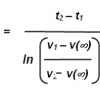I think I've found a molecule that can be orally administered that restores critical period plasticity.
It is in this 2011 patent here: Nogo Receptor Binding Small Molecules to Promote Axonal Growth
Stephen M. Strittmatter <-- this guy is a key player
Three years ago. So that means probably someone has manufactured it.
If not, is there anyone in this community with the power to manifest it? Calling all big fish that swim deep! Please PM or post!
Here is a summary of my research to date.
Firstly, animals have critical periods during which key brain wiring happens. Hubel and Wiesel received the 1981 Nobel Prize in Physiology or Medicine for showing that if you cover one eye of a mouse between days 20 and 32, it never learns to use that eye. But either side of that window there is no lasting damage. Actually it was kittens but I can't remember the window numbers. They use mice now.
The brain is inherently plastic; but the degree of plasticity is controlled region by region. There is some meta-plasticity machinery at work that solidifies structure over time, allowing our basic functions (motor, cognitive, linguistic, ...) to be resilient and efficient through becoming hardwired.
Neuroscientists such as T K Hensch used this finding to uncover these meta-plasticity mechanisms that underlie critical periods. Syringe out braincells before during and after compare chemical composition. Then figure out what is at the root of the cause/effect cascade.
One of the main players is Nogo66-receptor (NgR) on the surface of the axon.
(I take it you know that the brain is a bunch of neurons each of which has an axon and several dendrites. Each of these looks like a tree. Axons and dendrites connect via synapses. Electric pulse goes out of the axon and gets picked up in the dendrites.)
As the brain ages, oligodendrocyte cells sent out tendrils that wrap myelin sheaths around axons (and dendrites for that matter). This myelin secretes three messagers (Nogo, OMgp, MAG), all of which activate NgR, which launches the signalling cascade that inhibits further growth of the axon (through destroying its growthcone).
However, if you can somehow disable this NgR, then axons won't stop growing.
Does this lead to a persistent critical period? The way to find out is to breed NgR-knockout mice (that receptor is just some protein, so they locate it's coding sequence in the DNA and cut it out. How? MAGICK!) and do the eyepatch thing. It works!
So, how to disable NgR?
I'm not sure exactly how they found this out, but they did find out that certain HDAC inhibitors have this effect. VPA (Sodium Valproate), a HDACi (class 2 I think -- grateful if anyone can tell me), has the effect of disabling NgR to some extent.
Time for a human experiment? Valproate reopens critical-period learning of absolute pitch. In fact that paper is what started me off researching a couple of months ago. So everything I've written here -- that paper was the starting point for me!
Slightly dodgy results in that experiment. Nevertheless I tried it myself. VPA causes inflammation of my lungs, painful breathing, I had to stop. Apparently this is a known side effect that affects <1%. My shit luck. Bollocks. Fuckadiddle. etc.
So either I need another (class 2?) HDACi, or I need to specifically disable NgR. That's how I found the patent paper this morning.
Let me explain briefly HDAC inhibition, so that I can offer some explanation of what's going on in that paper.
DNA winds around spools called HISTONES. DNA contains the codes for ~22k proteins, molecular machines attach at specific points and copy the section for a particular protein's coding sequence (this blueprint then gets sent out of the nucleus, built into the actual protein). HDACi involves molecules attaching onto the tails of these histones that reduce their electrical charge, so the DNA loses its tight grip on the spool, and this means the transcription machine get round it. Sometimes HDACi is medicated for cancer because the DNA is wound too tight "kill a cell" messenger proteins can't get created, and cells don't get killed.
I've put up a starter kit for learning HDACi on my wiki http://mathpad.wikidot.com/hdaci
So HDACi results in increased for transcription rates of a ton of proteins. One of them disables NgR. But which one?
If you look on that patent paper, you'll see that they start out with a test for whether a particular protein disables NgR. Then they throw a whole load of molecules through this test, patenting the winner(s). They don't say where they get these candidates from, but I'm guessing they are throwing every protein on the DNA strand through.
NOTE: be warned, I'm a computer programmer by trade by the way, with no experience in biology/chemistry/neurology. I've had to stop coding due to strain injuries, which gives me a lot of time for reading some papers and learning. I'm about six weeks in. So if I say something that reveals my understanding is completely wrong, please put me right!
π
Edited by pi-, 19 August 2014 - 12:25 AM.































































